Texas
Spanish Conquistadores arrived in Mexico in 1519 but they did not initially settle in Texas. After the French established an unsuccessful colony in the 1680s the Spanish reinforced their claim by setting up some missions in east Texas, but closed them in 1691. It was not until 1718 that the Spanish arrived permanently in Texas by founding San Antonio. Mexico won independence from Spain in 1821 and Texas forming part of the new country. Texas was still sparsely populated, so the Mexican government encouraged settlement from the US and soon settlers formed a majority. The settlers became dissatisfied with the way Mexico was governed and the 1835-36 Texas Revolution resulted in an an independent republic. However, the Texas Republic struggled to prevent incursions by Mexican troops, so in 1845 it negotiated to become a US state. In the Civil War Texas was on the Confederate side. Texas is huge, nearly 700,000 square kilometres (270,000 square miles), it was by far the largest state until Alaska became the 49th state and relegated it to 2nd place. Nevertheless, it is still the state where everything is larger than life from huge freeway interchanges to giant jellybeans. Maybe the larger than life attitude is a reflection of the troubled history of the Texas. After all, 6 flags have flown over it - Spain, France, Mexico, Texas Republic, the Confederation and the USA. We found the people very friendly; especially the man in cowboy gear in Fort Worth Stockyards who insisted on taking us on a guided tour of the Coliseum Rodeo Stadium.
Fort Davis National Historic Site
A classic American scene - the stars a stripes flutters over a huge parade ground. Fort Davis was set up in 1854 to protect those using the San Antonio to El Paso Road from attack during the Indian Wars. Unlike the frontier forts further north that had relatively short lives, the area remained dangerous for many years and it was not until 1891 that Fort Davis was finally abandoned. It became a National Historic Site in 1961 and now 24 of the buildings have been restored to a roofed state and five have been furnished to show how they would have looked when the fort was in active use.
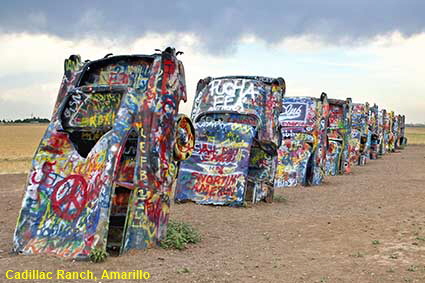
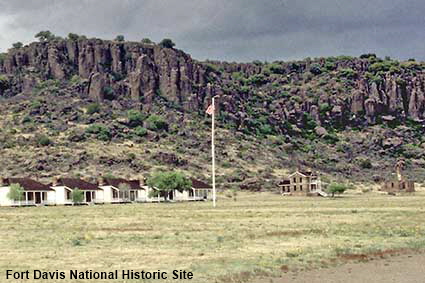
Palo Duro Canyon from Visitor Center viewpoint
The Palo Duro Canyon is about 40 kilometres (25 miles) south of Amarillo. It is often described as the Grand Canyon of Texas but in this case Texas can not claim a record as the Grand Canyon is appreciably larger. Nevertheless, Palo Duro is impressive at roughly 200 kilometres (125 miles) long, up to 32 km (20 miles) wide and up to 250 metres (800 feet) deep which makes it the second largest canyon in the US. Spanish explorers discovered the canyon and they named it Palo Duro (Hard Wood) after the mesquite and juniper trees that flourished in it. When the Spanish arrived there were Comanche and Kiowa Indians living in the canyon but in 1874 the US government forced them to move to Oklahoma. After the Indians were removed the land was used for ranching. In 1934 the northern section of the canyon became Palo Duro Canyon State Park.
Texas State Capitol, Austin
In 1839 the Republic of Texas designated Austin as its capital. A log cabin surrounded by a stockade served as the capitol until 1853 when a new capitol was built of limestone. It was a relatively simple building and by the mid 1870s it was decided that Texas deserved something better. There were eleven entries to a competition for the design of a new capitol and in 1880 a design was selected. The winning design was in the Italian Renaissance Revival style by Detroit architect Elijah E. Myers . The 1853 capitol was destroyed by fire in 1881, so it was fortunate that a new capitol was on the drawing board. However the plans for the new capitol were in the old capitol when it caught fire and they were very nearly lost. The new State Capitol building was opened in May 1888 and since this is Texas it is the highest Capitol building in the USA at 94 metres (308 feet) tall beating even the National Capitol in Washington DC. Renovations and a major underground extension were completed in 1995. The Texas State Capitol is open daily for tours.
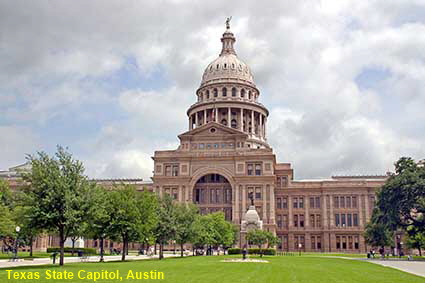
DLU160812
Click on Minimap to navigate
Home > US States > The Southwest >


We have more pages on Texas. Click below or on the Minimap:
H D Gruene store, Gruene
Texas has more than Spanish, Mexican and American in its historical mix. In the mid 1840s hundreds Germans settled on land along the Guadalupe River north east of San Antonio. Their passage to Texas was organised by a German society known as the Adelsverein. The settlers were originally intended to travel further north, but with time running out before winter, land was purchased for them on the Guadalupe River and there they founded New Braunfels. When Ernst Gruene arrived in 1845 there was little land available in New Braunfels so he purchased land further north up the Guadalupe River. Later, Gruene’s second son, Heinrich (Henry) D. Gruene built his house and set up a cotton plantation on the land. The plantation was successful and and it attracted several other families to settle in the area creating a town that was named Goodwin. In 1878 Heinrich Gruene opened a mercantile to serve the families living in the town. In the 1880s the town was renamed Gruene and about 1903 a new mercantile building was constructed. In the 1920s an unwelcome visitor arrived in the form of the boll weevil which destroyed crops then in the 1930s the great depression hit Gruene. By the 1950s it had become a virtual ghost town. In the 1970s Gruene was rescued from developers and its old buildings were put to new uses. The old mercantile store now sells antiques and Heinrich Gruene’s house is now the Gruene Mansion Inn. Click Tab 2 to see the Gruene Mansion Inn
Cadillac Ranch, Amarillo
When Tony Christie sang ‘Show me the way to Amarill’” he certainly wasn’t expecting this. The phrase ‘only in the USA....’ has been used elsewhere in this site, but this one wins a gold medal. In a wheat field just west of Amarillo by the former Route 66 can be found ten Cadillacs buried nose down, apparently at the same angle as the sides of the pyramid of Cheops in Egypt. The Cadillac Ranch was set up in 1974 by a local collective of artists in a field owned by a millionaire who seems not to mind the ever changing graffiti. In 1997 expansion of Amarillo forced the relocation of the Ranch to another field further to the west. About 45 kilometres (28 miles) east of Amarillo at Conway five Volkswagen Beetles have been buried nose down in tribute to the Cadillac Ranch. Click Tab 2 to see a picture of the Conway Bug Ranch.
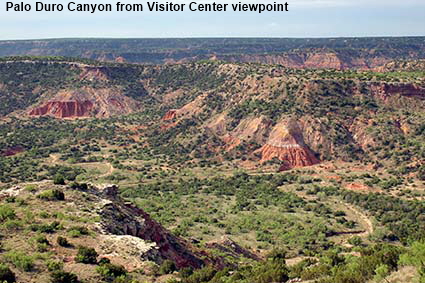
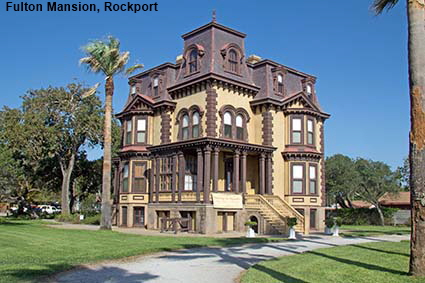
Fulton Mansion, Rockport
Overlooking Aransas Bay north of Corpus Christi is an absolute gem of a Victorian house. In 1840 entrepreneur George W. Fulton married Harriet Smith, daughter of powerful politician in the Texas Republic. When her father died Harriet inherited land on Aransas Bay and George Fulton established a ranching and meatpacking empire on the land. The Fultons grew rich so between 1874 and 1877 they built a mansion called Oakhurst. George Fulton was not just a successful entrepreneur, he was also an engineer and inventor. He filled Oakhurst with the latest technology of the time including gas lighting, central heating and indoor plumbing. The Fulton family lived in the house for 18 years. In 1976 the Texas Parks and Wildlife Department acquired the property then in 2008 it was transferred to the Texas Historical Commission. It has been furnished as it would have been in the days of the Fulton family and is open to the public as Fulton Mansion State Historic Site. Click Tab 2 to see a picture of the Parlor.
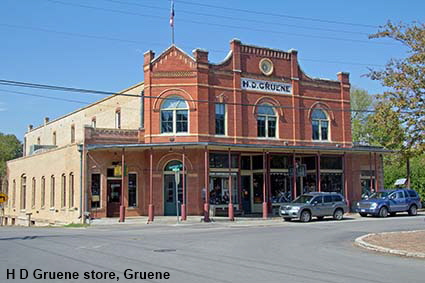
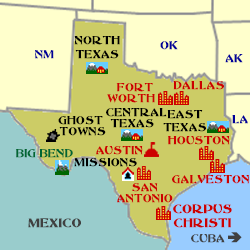

© Mike Elsden 1981 - 2025
The contents of this page may not be reproduced in full or in part without permission